
|
Contents
- Introduction
- Days become numbered for the British !
- Holy sacrament (Prasad) of Goddess
- Religious repression by few British men
- Which was the divine principle of revolution?
- When was the resolve for the freedom fight made?
- Burning of Meerut
- Freedom fight begins
- Inspiring letter dedicated to Martyrs of 1857 written by Swatantryaveer Savarkar
Introduction
10th May 1857 has gained an unswerving status in Indian history. The open challenge of the first freedom fight and actual action started on the same day. The first sparks of the freedom fight were ignited at Meerut near Delhi on this day for two reasons, ‘Swa-Dharma’ and ‘Swa-rajya’. The sparks turned into a wild fire within no time. Due to this flame, the British Empire could not rule this country even for a100 years. In 1947 i.e. in 90 years, Hindustani revolutionaries and the people drove the British away.
Days become numbered for the British !
Whatever happened on this day was sudden although not unexpected. But for this, we will have to peep a little into our history. In the year 1600, East India Company was set up to develop trade between England and Hindustan. This company soon established itself in Hindustan with its Head Office in Kolkata. After the battle of Placy in the year 1757, the Company took over almost the whole of Hindustan by hook or by crook. Few Englishmen started thinking about celebrating a century of their victory with great pomp and show on the 23rd June 1857.
On the other hand, many natives of Hindustan were planning about how to eliminate the British rather than let them celebrate the century of victory at Placy. Around the same time, the ‘chapati’ agitation picked up in Agra and Avadh. These ‘chapatis’ used to reach the dining tables of the British and they used to get scared. They issued orders to investigate the matter of ‘chapatis’; but could not obtain reliable information till the end. What did these ‘chapatis’ contain?
Holy sacrament (Prasad) of Goddess
Thereafter, the sacrament of ‘chapatis’ started reaching nearby villages in Kanpur, Lucknow area within one night. Wherever the sacrament used to reach, people from that place used to make similar ‘prasad’ and send it across to the next village. Circulation of red lotus flowers also started on large scale. The receiver and giver of the flowers used to say together, “Everything will become red in a few days.”
Religious repression by few British men
The Company was using ‘Brown base’, a type of guns for its army until then; but it started importing guns made in the ‘Enfield’ factory in England. Later, even in Hindustan, production of guns was started at ‘Damdam’ and ‘Ambala’. In these guns, the covering of the cartridge used to be coated with fat so that they fitted tightly in the gun. This fat used to be mainly of pigs or cows. The coating had to be removed with one’s teeth before loading the cartridge in the gun. While doing this, little fat used to come in contact with the tongue. The Hindustani soldiers, therefore, were sure that such guns were purposely manufactured by the Christian Company Government to convert them.
Which was the divine principle of revolution?
It would be an insult of all those thousands of people who took part in the freedom fight, if we say that the main reasons for the freedom fight were cartridges coated with the fat of cows and pigs or some small state being taken over. The reasons which are still taught in schools and colleges are superficial. In the book on the freedom fight first published in Holland in the year 1909, Savarkar says, “If the revolution of 1857 took place only because of the cartridges, why did Nanasaheb, the king of Delhi, the Queen of Jhansi or Khan Bahadur Khan of Rohilkhand join this revolution? They did not serve in the British army nor were they ordered to remove the coating of the cartridges sitting at home. If the 57 revolution was only or mainly due to the fat used for coating cartridges, it would have immediately subsided when the British Governor General in Hindustan issued an order to not use such cartridges. Despite the Government allowing the soldiers to make their own cartridges with hand, the soldiers neither implemented the order nor did they leave their jobs from the viewpoint of getting rid of all the problems. Not just the army men but so also thousands of people who were in no way connected to the military, kings, statesmen etc. sacrificed their life in the battle. The points raised by Savarkar in this book have not yet been refuted by any historian so far.
When was the resolve for the freedom fight made?
Burning of Meerut
In between Barrakpur in the East and Ambala in the West, there was Meerut. The military station at Meerut had to keep vigilance on Delhi. 11th and 20th battalion of army was kept at Meerut considering its importance. There was also a cavalry squad at Meerut. It was decided to conduct an experiment on 6th May to see whether the soldiers really have complaints about the new cartridges. On the previous night, the soldiers had taken an oath that they would not touch the cartridges coated with fat. On 6th May, the troopers were given the cartridges during their parade. All i.e. 85 out of 85 soldiers refused even to touch the cartridges. The Military Court sentenced them to 10 years of rigorous imprisonment.
On 9th May, in the morning, all the 85 devout were made to stand under the vigil of the European Company and artillery for execution of the punishment. 1700 soldiers were specifically brought from outside just to witness that scene. Savarkar says, “Those 85 patriots were asked to remove their clothes; their weapons were removed. Their clothes were thrown away and they were shackled with big iron fetters. All the newly brought in Hindu soldiers were trembling with anger to see how their brethren who had once held swords in their hands, were now being humiliatingly shackled. But looking at the Britishers artillery pointing at them, the swords carried by them remained inside sheathes. Later, the 85 brave soldiers were informed about their punishment of 10 years rigorous imprisonment. Bending with the heavy shackles on their hands and feet, they started towards the jail.”
The soldiers enraged to be a witness to the insult of their fellow countrymen returned to their barracks. When some of them went to the market, they came across women who started insulting them by saying, “Your elders are sent to jail and you are enjoying here. We condemn your living in such a manner.” How could the already furious soldiers bear the insult? Great were those mothers and sisters who motivated the soldiers to take revenge on the oppression meted out to their compatriots.
Freedom fight begins
The beginning of the freedom-fight has now completed about 150 years. The conditions prevailing 150 years back in India remain the same even today. All the hard earned money of the people and gold etc. used to be sent to England by ships at that time; now, the same money earned through various scams like the purchase of weapons etc., is sent to Switzerland. ‘Swa-Dharma is even more in danger compared to those times. The present rulers are happy to degrade both ‘Swa-Dharma’ and ‘Swa-Rajya’. To overcome such a situation, only the remembrance of all revolutionaries, who suffered so much for the upliftment of ‘Swa-Dharma’ and ‘Swa-Rajya’, would inspire the people to take the path of revolt once again.
Inspiring letter dedicated to Martyrs of 1857 written by Swatantryaveer Savarkar
This is a dedication to the Martyrs of 1857 which was written by Savarkar on the occasion of the fiftieth anniversary of the Indian War of Independence 1857. It was then published under the title 'Oh Martyrs' and circulated on the 10 May 1908 at the time of the Golden Jubilee ceremony which was celebrated in England on a grand scale.
Oh Martyrs
And handed down from sire to son
Though often lost is ever won!!

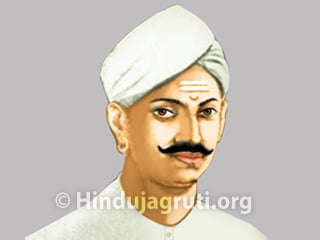
 Life History of Subhash Chandra Bose : Father of the Indian Freedom
Life History of Subhash Chandra Bose : Father of the Indian Freedom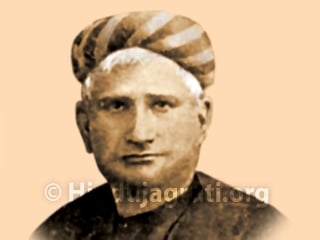 Bankim Chandra Chattopadhyay - The composer of National Song ‘Vande Mataram’
Bankim Chandra Chattopadhyay - The composer of National Song ‘Vande Mataram’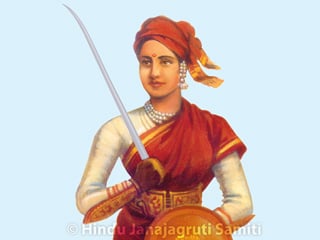 Jhansi ki Rani - Rani Lakshmi Bai
Jhansi ki Rani - Rani Lakshmi Bai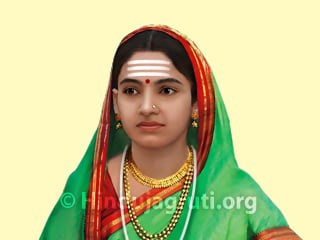 Kittur Rani Chennamma : Earliest ruler to fight British rule
Kittur Rani Chennamma : Earliest ruler to fight British rule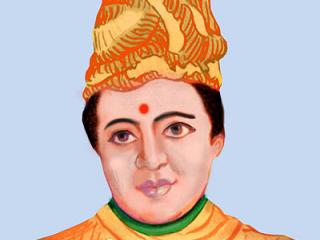 Rani Tapaswini: Combination of Brahmatej and Kshatratej
Rani Tapaswini: Combination of Brahmatej and Kshatratej